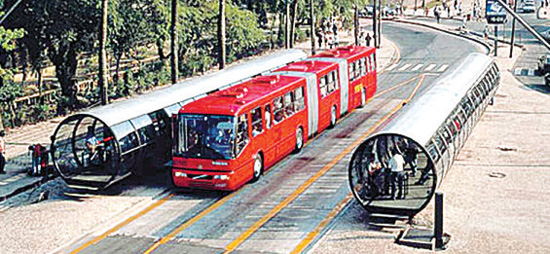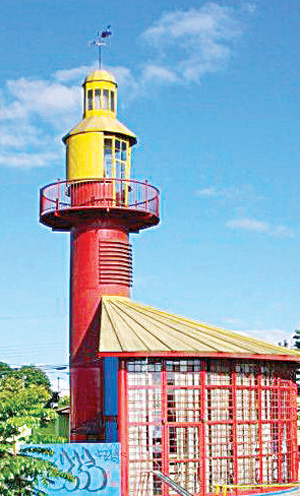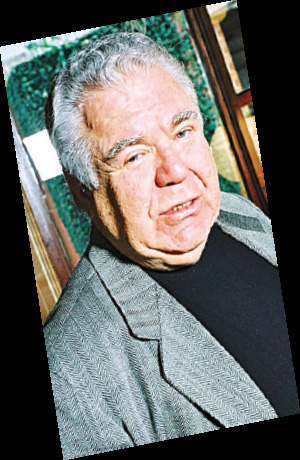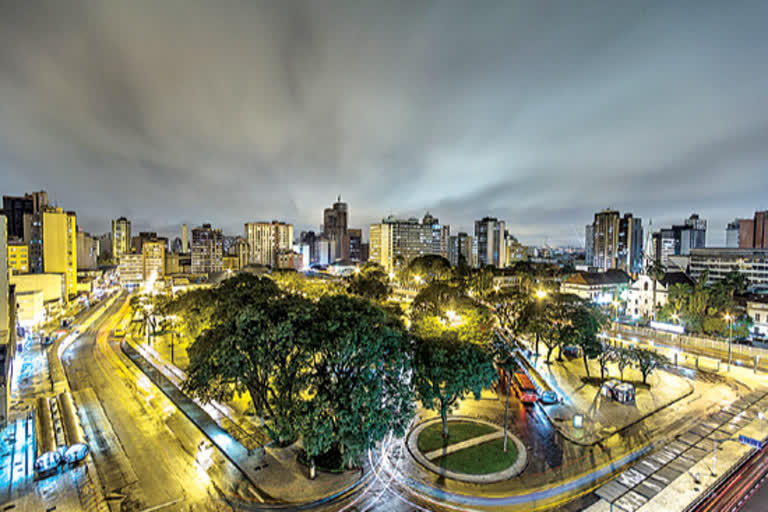Paraná: 10-years-old Christiano Pereira attended his school after vacations that day when his teacher asked him to bring notebooks from the following day. To buy new books for his class, Christiano sold house trash for 8 pounds.
Every week Christiano and his brother used to take trash from their house and exchange it for fresh fruit, chocolates and cakes. Surprisingly, this system helps ordinary people to avail daily essentials in exchange to the trash and this is what makes Curitiba town is famous for.
Curitiba too had problems!
Until the 1970s, this city was also littered with many problems. The whole world was shocked by the transformation that took place all because of the vision of a former Mayor of Curitiba Jaime Lerner.
With the increased population, the region witnessed heavy traffic following which people faced problems in commutation and transportation. They were forced to live in congested homes under conditions of illiteracy, unemployment, pollution and poverty due to which there was a steep rise in the slum dwellers across the city.
But with passing time, Curitiba has emerged as a model town due to the following factors:
Waste Management
Garbage is no more a wastage here. Anything that is thrown away is being recycled here and used in a different form. That's why the city is known as the World’s Recycling Capital.
The recycling method not only keeps the city clean but also gives rise to various employment opportunities to the poor, for their sustainability.
Reduction in the diseases as cleanliness is maintained everywhere.
Above all, the rivers have been kept free-flowing thereby reducing the chances of flooding due to garbage accumulation in the water bodies.
The method of giving tokens in exchange for the garbage collected for recycling has done wonders to the people. Tokens were converted into money. Following this formula, nearly 90 per cent of the people in town are involved in the eco-friendly recycling process thereby reducing the garbage and wastage in the town.
The town’s wastage, almost to the tune of 70 per cent gets recycled regularly.
Large parks are built where citizen have ownerships of 50 square feet of greenery.

Infrastructure
During the early days, the urban population grew at an alarming rate because of the large scale migration of people into this city. To ease the traffic movement, a large number of subways and metros were needed but the town was unable to afford a huge budget.
In 1991, subways were constructed on the roads itself. Tubular stations with mirrors were placed by the side of which long buses would pass by. The passengers could use any of the entrances inbuilt in the tube stations. These long buses were designed to carry a large number of people in each lap and the commutation method was termed Bus Rapid Transit (BRT). About 300 other towns and cities have henceforth followed this strategy of public transport.
Curitiba’s citizens have more number of cars than those living in its capital city, Brasilia. However, it is to be understood as to how convenient it is for the citizens to use the BRT public transport system, as about 85% of the city dwellers use the BRT system;
The per capita consumption of petrol consumption is 25 per cent less when compared to the rest of the country.
Education
The education and learning systems for the children rely largely on local exemplary issues.
Children here are taught that ‘Glass’ is much more valuable than valuables like Gold and Diamond, as it can be recycled and reused.
Maths is taught through examples of recycling and the profitability/savings involved in it.
The 4-volume book on the development process of Curitiba written by Jamie Lerner has been included in the school syllabus.
In 1991, the government established an open university specifically dedicated to environmental protection.
People are motivated to learn creative recycling methods.
School kids are asked to grow kitchen gardens and sell their vegetables which helps them earn while learning.

Lighthouse learning
Curitiba has developed the concept of the lighthouse of knowledge by using the ground floor of the lighthouses as libraries.
50 such lighthouses have been set up in the town. Children update their knowledge through reading books and using free internet service for current affairs as enhanced knowledge decreases crime rates.
Certain streets are named as Citizenship Streets, where the government offices are located which assist people to pay their bills, apply for their licenses, loans and school/college admissions.
Each colony hosts a 600-seat capacitated Open Air Theatres, night-Courts, classrooms etc. where a variety of professional courses can be learnt in just $1.

Mind behind innovative Curitiba
During the 1960s, Curitiba was flooded with people who migrated from Germany, Poland, Italy and Ukraine. In 1971, Jamie Lerner was appointed as the Mayor of Curitiba.
The Mayor proposed to make changes in the mid-town to suit the pedestrian requirements. However, he faced a lot of rejection from the shopkeepers in the area.
The protesters used to go to the court and obtain stay-order on any sort of developmental activity proposed. With this, Lerner planned strategically and got the work initiated on a war-footing during which the court was non-functional. The area was converted to allow commercial use convenient for the pedestrians, without the disturbance of any vehicular movement.
Leaders and governments may change, but the power lies in the hands of 18 lakh people as they are the sole shareholders of its development which have given the title of Greenest City on Earth to Curitiba.



